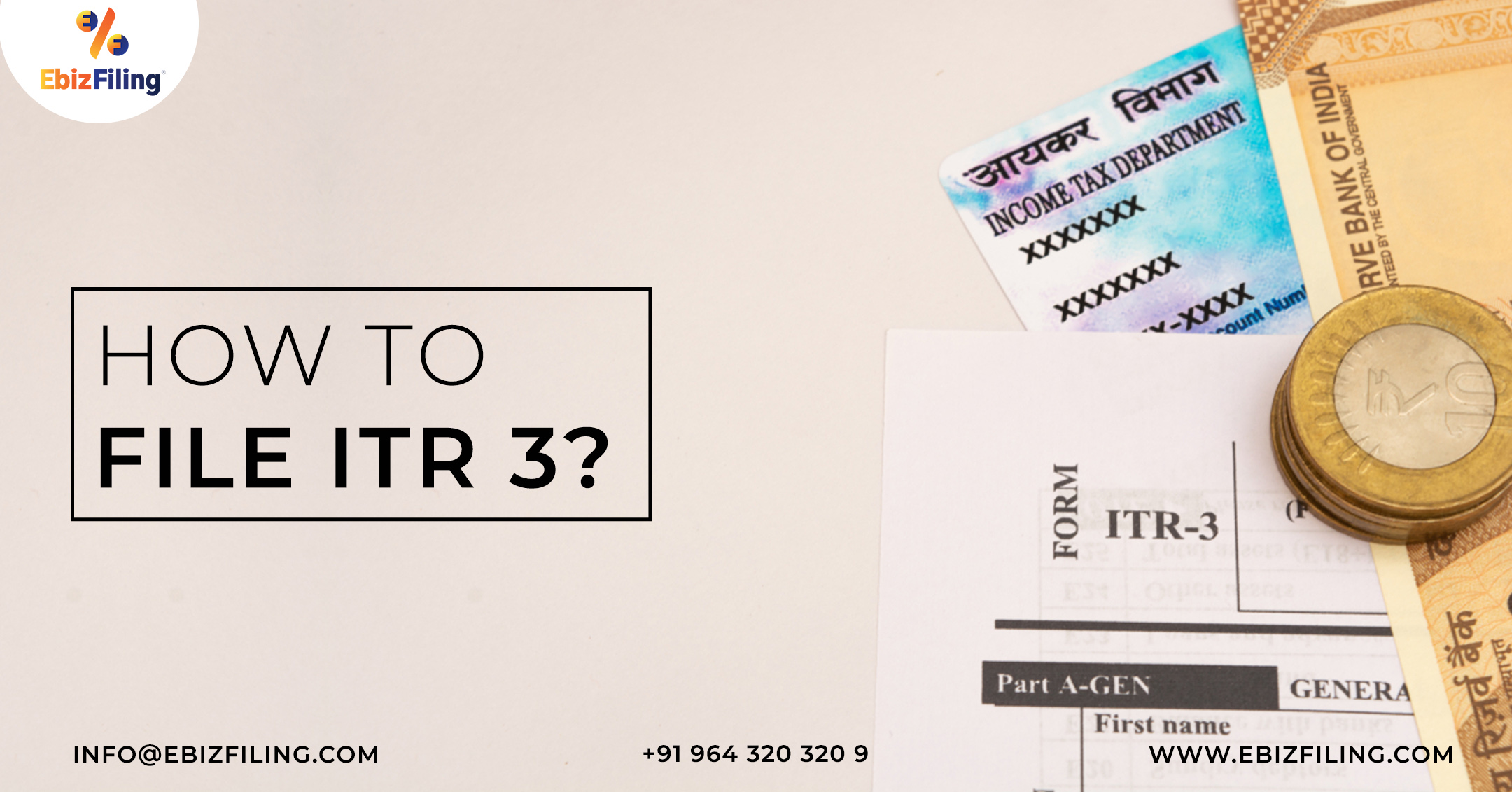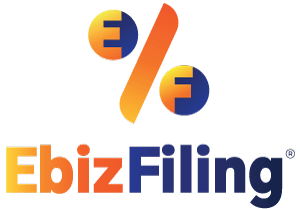
-
November 12, 2022
What is ITR 3 Form?, “How to file ITR 3?”, And information on “Who can file ITR 3?”
Introduction
In India, there are several types of taxpayers, each of whom requires a separate form to file income tax returns. ITR (Income Tax Return) 3 is one such form, which is regarded as the most difficult ITR form for taxpayers, especially for a layperson. Do not worry in this article we will include information on “What is ITR 3 Form?”, “How to File ITR 3?”, and “Who can file ITR 3?”
What is ITR 3 Form?
ITR 3 is a tax form that is used by residents and Hindu Undivided Families (HUFs). An assessee must make revenue through a sole proprietorship business or a profession in order to file income tax returns using the ITR (Income Tax Return) 3 form. You can file ITR-3 for Income Tax Returns if you earn money through a small business or a profession such as engineering, architecture, medicine, accounting, or other related fields.
Important Note: With effect from AY 2020-21 (FY 2019-20), the INR 1 crore threshold limit for a tax audit is proposed to be enhanced to INR 5 crore if the taxpayer’s cash receipts are limited to 5% of gross receipts or turnover, and if the taxpayer’s cash payments are limited to 5% of the aggregate payments.
Information on “Who can file ITR 3?”
Individuals and HUFs who make money from a profession or a proprietary business are required to file ITR 3 Form. When the assessee’s income falls into one of the following categories, the ITR 3 Form can be used:
-
Earnings from working in a profession.
-
Profits from a Sole Proprietorship.
-
Aside from that, the business returns might also contain salary or pension, residential property, and other sources of revenue.
Structure for Income Tax ITR 3 Form
-
Part A
- Part A-GEN: This section contains general information and information about the nature of a business.
- Part A: Manufacturing Account: This section presents a manufacturing account for a certain fiscal year.
- Part A: Trading account: It has a trading account for a certain fiscal year.
- Part A-P&L: This section reveals the earnings and losses for a specific fiscal year.
- Part A-BS: It shows the proprietary business’s balance sheet at the end of the year.
- A-OI: Other information is included in this section. It is, however, optional if the matter is not subject to audit under section 44AB.
- Part A-QD: This section contains quantitative information that is optional in cases where an audit is not required under section 44AB.
-
Schedules
- Schedule-S: Income computation under the heading Salaries.
- Under the heading Income from House Property, compute your income (Schedule-HP).
- Calculation of a business or profession’s income (Schedule BP)
- Depreciation on plant and machinery under the Income Tax Act (Schedule DPM)
- Depreciation on other assets under the Income-tax Act (Schedule DOA)
- Schedule DEP: Summary of depreciation on all assets under the Income-tax Act
- Schedule DCG: Depreciation on the sale of depreciable assets under the Income-tax Act
- Schedule ESR deduction under section 35 (expenditure on scientific research)
- Calculation of income under the category Capital gains on Schedule-CG.
- Particulars of Capital Gains in Cases Where Section 112A Applies (Schedule 112A)
- 115AD(1)(b) of the Schedule (iii) Proviso: If section 112A applies to non-residents, details of capital gains must be provided.
- Calculation of income on Schedule-OS under the heading Income from Other Sources.
- Schedule-CYLA-BFLA: Income statement after current-year losses have been set off, as well as income statement after unabsorbed losses from past years, have been set off.
- Income statements after losses from the current year have been deducted (Schedule-CYLA).
- Income statement after set-off of unabsorbed loss carried forward from prior years (Schedule BFLA).
- Schedule CFL: Loss statement to be carried over to subsequent years.
- Schedule-UD: Unabsorbed depreciation statement.
- Effect of Income Computation Disclosure Standards on Profit (Schedule ICDS)
- Schedule 10AA: Section 10AA is used to calculate deductions.
- A statement of charitable contributions that are qualified for a deduction under section 80G is called a Schedule 80G.
- Schedule-80IA is used to calculate the deduction under section 80IA.
- Calculation of the deduction under section 80IB using the 80IB Schedule.
- Schedule-80IC/80-IE: Deduction computation under sections 80IC/80-IE.
- Schedule VI-A: Statement of Chapter VIA deductions (from total income).
- Computation of the Alternate Minimum Tax Due Under Section 115JC (Schedule AMT)
- Schedule AMTC is used to calculate the tax credit under section 115JD.
- Schedule SPI: Income from a spouse, minor child, son’s wife, or any other individual or group of people should be included in the assessee’s income in Schedules HP, BP, CG, and OS.
- Statement of income subject to special tax rates (Schedule SI).
- Information on partnership firms in which the assessee is a partner (Schedule-IF).
- Statement of Income not included in total income (Schedule Exempt Income (EI)).
- Schedule PTI: As required by sections 115UA and 115UB, pass through income data from a business trust or investment fund.
- Schedule TPSA: Secondary adjustment to transfer price under Section 92CE (2A)
- Schedule FSI: Tax incentives and information on income generated outside of India
- Statement of tax relief sought under sections 90, 90A, or 91 of the Internal Revenue Code (Schedule TR).
- Foreign Assets and Income from Any Source Outside India (Statement of Foreign Assets and Income from Any Source Outside India) (Schedule FA).
- Schedule 5A: Details on how the Portuguese Civil Code controls income division between spouses.
- Assets and liabilities at the end of the year (Schedule AL) (applicable where the total income exceeds Rs 50 lakhs)
- Schedule GST: Information on gross receipts/turnover submitted for Goods and Service Tax.
- Part B
-
-
Part B-TI is responsible for calculating a taxpayer’s total income.
-
Part B-TTI: This section calculates the overall income tax liability.
-
-
Verification
Finally, the ITR-3 structure includes verification to verify the information provided previously.
Information on “How to File ITR 3?”
ITR-3 online filing is required for all taxpayers. The ITR-3 can be filed electronically or online:
-
By submitting the return electronically with a digital signature, you can save time and money.
-
By sending the data electronically and then completing Form ITR-V to verify the return, you can save time and money.
-
The acknowledgement will be sent to your registered email address if you submit your ITR-3 Form electronically with a digital signature.
-
You can also choose to directly download it from the IRS website.
-
You must sign and send it to the Income Tax Department’s CPC headquarters in Bangalore within 120 days after e-filing.
-
ITR-3 is an annexure-free form, which implies it does not require any attachments.
Amendments made in ITR 3
From April 1, 2020, the dividend recipient will be required to pay taxes. Relevant sections of the Act, such as Sections 10(34), 10(35), and 115-O, have been revised, and the ITR Form has been updated to reflect these changes.
Taxpayers are provided relief payment of advance tax burden if the dividend is not received. As a result, the ITR Form allows taxpayers to input the details of their dividend income every quarter in order to calculate the interest under Section 234C for failure to pay advance tax.
With the revisions to section 44AB of the Finance Bill 2021, the tax audit threshold limit has been raised from INR 5 crores to INR 10 crores if cash payments are less than 5% of total sales or turnover. The ITR Form incorporates the necessary amendment.
In the ITR (Income Tax Return) Form for the AY 2021-2022, the Schedule DI introduced for the AY 2020-2021 to claim the deduction for investments or expenditures undertaken in the extended period (1st April 2020 to June 30th, 2020) has been eliminated.
A new column is added to Schedule 112A and Schedule 115AD (1) (b) (iii) provisos to describe the type of the securities transferred for calculating capital gains tax under Section 112A or Section 115 AD (1) (b) (iii) of the Internal Revenue Code. The schedules have also been changed to allow taxpayers to enter information on the security’s sale price, fair market value, and purchase cost.
Part A of the ITR 3 Form contains general information that has been changed to allow the taxpayer to select the best alternative choice under Section 115 BAC.
Conclusion
Individuals and Hindu Undivided Families who generate profit and earnings from business or profession can use the ITR 3 Form. If a person or a Hindu undivided family earns money as a partner in a business partnership, ITR-3 cannot be submitted; instead, the individual must file ITR-2.
ITR filing
Filing of Income Tax return is necessary if you have earned any income. File your ITR with EbizFiling
About Ebizfiling -










Reviews
Akshay shinde
23 Apr 2019Excellent service…
Hemanshu Mahajan
01 Apr 2018I registered my LLP company, from eBizfilling. Great team and very competitive pricing. Will definitely use their services again.Thanks for work well done.
Kartar Singh Sandil
09 Mar 2018Your working team is genius. Thanks.
June 16, 2025 By Team Ebizfiling
How Should Freelancers in India File Taxes on Income Earned from Foreign Clients? Introduction Freelancers in India often work with clients based in other countries. While the payments come in foreign currency, the income is fully taxable under Indian tax […]
April 5, 2025 By Team Ebizfiling
Compliance Calendar for the month of March 2025 As the month of March is approaching, stay ahead of deadlines with the Compliance Calendar for March 2025! From GST returns to PF/ESI payments and income tax filings, this month is packed […]
February 13, 2025 By Team Ebizfiling
New Income Tax Bill, 2025 – New Updates & Highlights Finance Minister Nirmala Sitharaman presented the Income Tax Bill 2025 in the Lok Sabha on February 13. The bill aims to make the tax system simpler by using easy language, […]